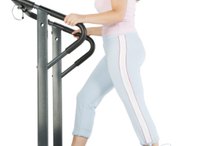More Articles
How Does Blood Pressure Respond to Isometric Exercise?
Blood pressure is defined as the pressure exerted by your blood against the walls of your arteries. Measured in millimeters of mercury, or mmHg for short, blood pressure is assessed using an inflatable cuff called a sphygmomanometer. Blood pressure fluctuates constantly throughout the day, but if your heart is working harder than usual -- for example during physical exertion -- your blood pressure can rise significantly. Isometric exercise can cause a very dramatic elevation in blood pressure, which may be dangerous is you suffer from hypertension.
If you are experiencing serious medical symptoms, seek emergency treatment immediately.
About Isometric Exercise
An isometric muscle contraction occurs when tension is generated within a muscle but the length of the muscle does not change. Isometric contractions are sometimes called static contractions. Exercises that are classed as isometric include the wall squat hold and abdominal planks. Isometric contractions often involve a strong Valsalva maneuver, which is one of the main factors that affect blood pressure during isometric exercise.
- An isometric muscle contraction occurs when tension is generated within a muscle but the length of the muscle does not change.
- Isometric contractions often involve a strong Valsalva maneuver, which is one of the main factors that affect blood pressure during isometric exercise.
The Valsalva Maneuver
Diastolic Blood Pressure During Exercise
Learn More
The Valsalva maneuver describes a forceful exhalation against a closed epiglottis, which happens whenever you strain to lift something heavy and especially in isometric exercise. The Valsalva maneuver increases intra-abdominal pressure, which is necessary to stabilize your spine from within but also causes a dramatic rise in blood pressure. According to “The Essentials of Exercise Physiology" by William McArdle, Frank Katch and Victor Katch, the Valsalva maneuver can cause:
- your blood pressure to rise from a normal resting level of 120 mmHg to over 300 [3](# 'inline-reference::"Essentials of Exercise Physiology"; Frank I
Katch
William D. McArdle,
Victor L. Katch; 2000').
Muscle Ischemia
Blood normally flows unimpeded through veins and arteries. When a muscle contracts in an isometric fashion, blood flow is interrupted and pressure builds up with the circulatory system much like when a dam is built across a fast-flowing river. The longer the isometric contraction is held, the greater the buildup of pressure. Once the contraction is relaxed, blood circulation and pressure should return to normal, but if blood pressure is already elevated, this interruption of blood flow can drive readings up to dangerously high levels.
- Blood normally flows unimpeded through veins and arteries.
- Once the contraction is relaxed, blood circulation and pressure should return to normal, but if blood pressure is already elevated, this interruption of blood flow can drive readings up to dangerously high levels.
Medical Considerations
How Long for Your Blood Pressure to Return to Normal After Running?
Learn More
In most healthy individuals, isometric exercises and the associated rise in blood pressure are of little consequence, but if your blood pressure is already elevated, the dramatic elevation of blood pressure can prove hazardous or even fatal. According to the American College of Sports Medicine, those with high blood pressure should avoid isometric exercise and performing the Valsalva maneuver; doing so may have a negative effect on cardiorespiratory health 1.
Avoiding Exercise-Induced Hypertension
To minimize your chances of dangerously increasing your blood pressure levels, the ACSM suggests ensuring that you breathe in time with your exercise repetitions and do not use overly heavy weights that cause you to strain. Exercises should only be performed to form failure -- the point at which you feel unable to continue without straining. Exercises such as decline bench presses and leg presses and heavy overhead exercises should be avoided; these tend to elevate blood pressure more than other exercises. Isometric exercises are best avoided if you have a history of hypertension.
- To minimize your chances of dangerously increasing your blood pressure levels, the ACSM suggests ensuring that you breathe in time with your exercise repetitions and do not use overly heavy weights that cause you to strain.
Related Articles
References
- "ACSM's Resources for the Personal Trainer"; American College of Sports Medicine; 2009
- "Designing Resistance Training Programs"; Steven Fleck and William Kraemer; 2003
- "Essentials of Exercise Physiology"; Frank I. Katch, William D. McArdle, and Victor L. Katch; 2000
Writer Bio
Patrick Dale is an experienced writer who has written for a plethora of international publications. A lecturer and trainer of trainers, he is a contributor to "Ultra-FIT" magazine and has been involved in fitness for more than 22 years. He authored the books "Military Fitness", "Live Long, Live Strong" and "No Gym? No Problem!" and served in the Royal Marines for five years.









